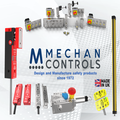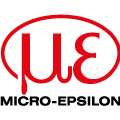
Posted to News on 30th Jun 2016, 14:20
Machine vision ensures quality in Altec's grommet sealant system
As a designer and manufacturer of Special Purpose Equipment, Altec Engineering is tasked with finding solutions to a wide variety of manufacturing processes. In every case, quality is paramount and in certain instances the only method of guaranteeing the quality and consistency of the manufacturing process is through the use of machine vision. In this application, Altec utilised machine vision to perform inspection and validation checks prior to and following the application of sealant to rubber grommets.
The vision systems in this application are integrated within a sophisticated and high-speed machine, operating at 600 parts per minute, which manufactures components used in Hearing Aids. The machine is used to feed and sort rubber grommets, before presenting them for sealant application. The processed components are then vision inspected to ensure 100 per cent quality.
The process begins with Grommets being fed from a vibratory bowl feeder into a track containing 10 separate rows. The grommets then move down the tracks to an escapement where they are released and fed into trays. Each tray contains multiple pockets which should contain a single grommet. The trays then travel to the first vision inspection station that is used to check that the grommets are in place within the tray and also in the correct orientation, with a slot at the top. This information is stored and subsequently used to control the sealant application.
The sealant application station comprises a total of 10 dispensing heads, five on each side of the station. Once the tray containing the grommets has been presented to the sealant applicators, individual applicators only advance to apply sealant if the grommet in that position has previously been deemed as present and in the correct orientation. A pre-determined quantity of sealant is then applied to each grommet and when this operation is complete the trays then continue to advance through the machine to the second vision inspection station.
This inspection area uses Black Light to make a dye within the sealant fluoresce allowing the camera in this station to verify that the sealant has been applied correctly to each grommet. The trays containing the processed grommets then pass through a heater system before reaching a double venturi system. Here all good parts are removed by one half of the system and any parts identified as reject are removed by the other. Empty trays then continue through the machine and return to the start position.
This machine is an excellent example of how machine vision can provide a reliable system in an application where other sensor-based systems would be less effective.
For more information about Altec Engineering, please visit www.alteceng.co.uk.
Want the latest machine building news straight to your inbox? Become a MachineBuilding member for free today >>

















